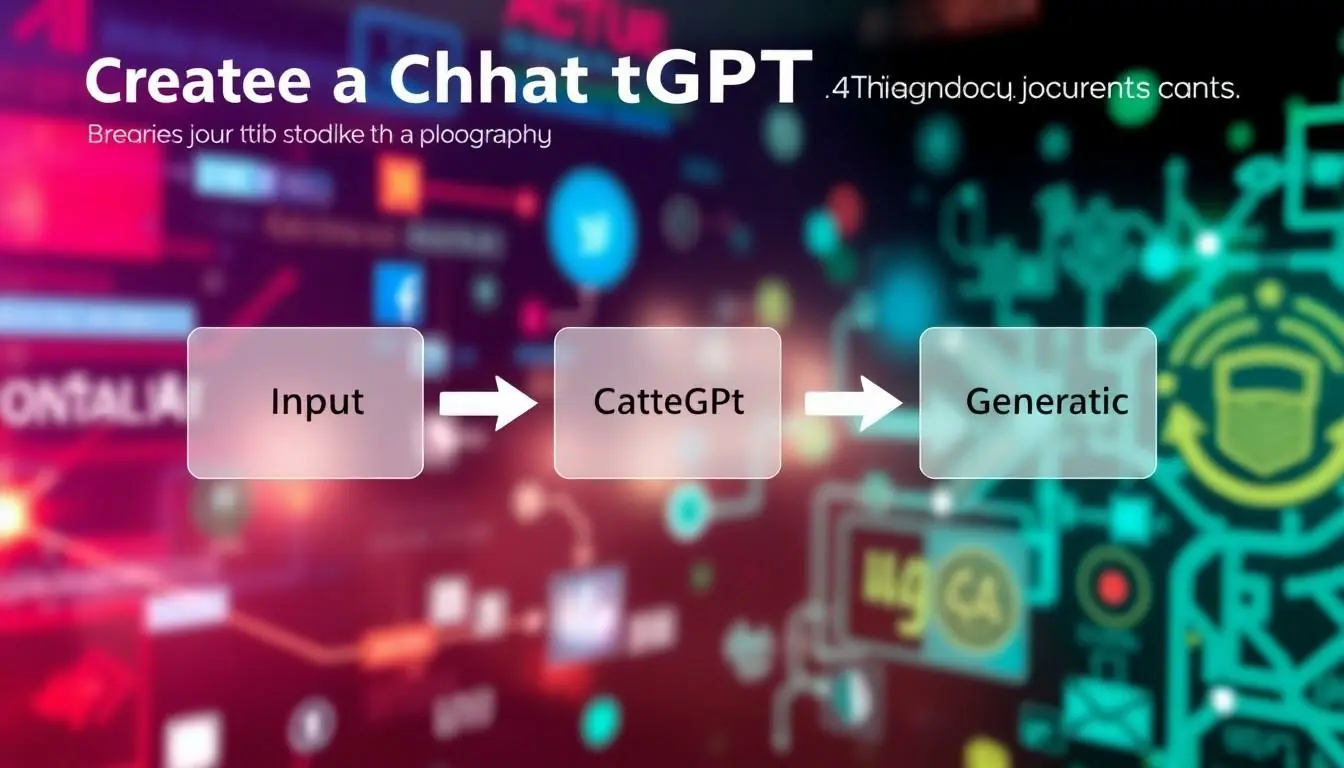Ever wondered how a chatbot can sound like your witty friend while still being a highly advanced piece of technology? The magic lies in the intricate workings of ChatGPT, and understanding it can feel like trying to decipher a secret recipe. But don’t worry; it’s not as complicated as it seems. With the right diagram, the inner workings of ChatGPT become as clear as a sunny day, minus the sunburn.
In this article, we’ll break down the fascinating components of ChatGPT with a simple diagram that even your cat could understand—if only they cared about artificial intelligence. Get ready to dive into the world of natural language processing, neural networks, and all the geeky goodness that makes ChatGPT tick. By the end, you’ll be able to impress your friends with your newfound knowledge and maybe even convince them that AI isn’t out to steal their jobs—yet.
Table of Contents
ToggleUnderstanding ChatGPT
ChatGPT operates through sophisticated mechanisms that facilitate natural conversation. This section elaborates on generative models and transformers, two core elements of its architecture.
Overview of Generative Models
Generative models create new content from existing data. They analyze patterns in training datasets, which consist of text from diverse sources. By learning from these patterns, the models can generate coherent and contextually relevant responses. ChatGPT exemplifies a generative model that excels in creating conversational exchanges. Through probabilistic methods, it predicts the next word based on the preceding words in a sentence. This approach allows for dynamic interaction, ensuring that the flow of conversation feels natural and engaging.
Introduction to Transformers
Transformers represent a breakthrough in natural language processing. They leverage self-attention mechanisms, enabling the model to weigh the importance of different words in a sentence. This mechanism facilitates understanding context and nuances in language. ChatGPT utilizes transformer architecture to handle extensive datasets efficiently. With layers that process input data in parallel, transformers significantly speed up training processes compared to earlier models. Their ability to grasp long-range dependencies within text enhances the model’s performance in generating relevant responses.
How ChatGPT Functions

ChatGPT operates through a series of well-defined steps that enable effective natural language interaction. Understanding its functionality requires exploring how it processes input, tokenizes text, and generates responses.
Input Processing
Input processing involves receiving user queries and interpreting their intent. Users submit text prompts, which serve as the foundation for generating meaningful responses. Parsing these inputs accurately is crucial for context. Clarity in user queries helps the system determine the correct direction for response creation. Thus, effective input processing sets the stage for subsequent steps.
Tokenization and Embeddings
Tokenization breaks the input text into smaller units known as tokens. Each token represents a word or subword, enabling more manageable data handling. Using embeddings, ChatGPT converts these tokens into numerical forms that the model can understand. This transformation captures semantic relationships between words. Distinct token representations facilitate deeper comprehension and processing of language, making responses more accurate.
Generative Process
The generative process involves the model analyzing processed input to create coherent responses. Using probabilistic methods, it predicts the most likely next tokens based on the context of the input. Neural network architecture, particularly transformers, plays a vital role in determining the flow of conversation. Each generated response reflects learned patterns, ensuring relevance to the initial user prompt. This iterative mechanism creates a dialogue that feels natural and engaging.
Visualizing the Diagram
Visual representations clarify the functioning of ChatGPT. Diagrams effectively illustrate complex processes, making them easier to understand.
Key Components of the Diagram
ChatGPT’s diagram features several key components. Natural language processing enables the model to understand user queries. Generative models create responses based on analyzed patterns in data. Transformers enhance language comprehension through self-attention mechanisms. These elements work together to facilitate meaningful interactions, allowing the system to generate coherent and contextually relevant responses.
Step-by-Step Breakdown
Understanding the flow of processes within ChatGPT reveals its sophistication. User queries are first received and interpreted to identify intent. Then, tokenization divides the input text into smaller units, known as tokens. Following this, embeddings convert those tokens into numerical representations that capture relationships. Finally, the generative process synthesizes a coherent response based on the analyzed input, ensuring relevance and contextual accuracy. Each step plays a crucial role in fostering effective communication.
Applications of ChatGPT
ChatGPT finds numerous applications across different sectors. Its versatility allows integration into various workflows, enhancing productivity and user experience.
Use Cases in Various Industries
ChatGPT benefits education by providing personalized tutoring and answering student queries. In healthcare, it assists with patient inquiries and educational content for medical professionals. Businesses leverage ChatGPT for automating customer service, leading to faster response times. Moreover, content creators utilize ChatGPT to generate ideas and drafts, streamlining the writing process. The technology also proves invaluable in marketing by analyzing consumer interactions and crafting tailored messages.
Benefits and Limitations
Significant advantages include efficiency, as ChatGPT processes vast amounts of data quickly. It offers consistency, providing reliable responses regardless of time or context. Despite these strengths, limitations exist. Dependence on training data may result in inaccuracies or outdated information. Additionally, context interpretation can pose challenges, leading to less relevant responses in complex scenarios. Recognizing these factors is crucial for effective utilization.
Understanding how ChatGPT works through a diagram simplifies its intricate processes. By visualizing components like natural language processing and generative models, one gains insight into how this AI communicates effectively. The flow from input processing to response generation showcases the model’s ability to engage in meaningful conversations.
While ChatGPT excels in various applications across industries, recognizing its limitations is essential for users. Awareness of potential inaccuracies and context challenges ensures more effective interactions. As technology evolves, knowledge of ChatGPT’s workings will empower individuals to leverage its capabilities while navigating its constraints.



